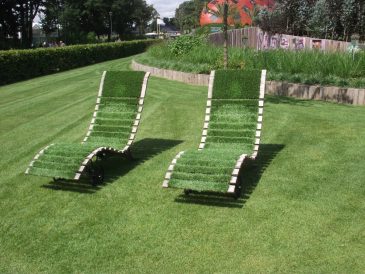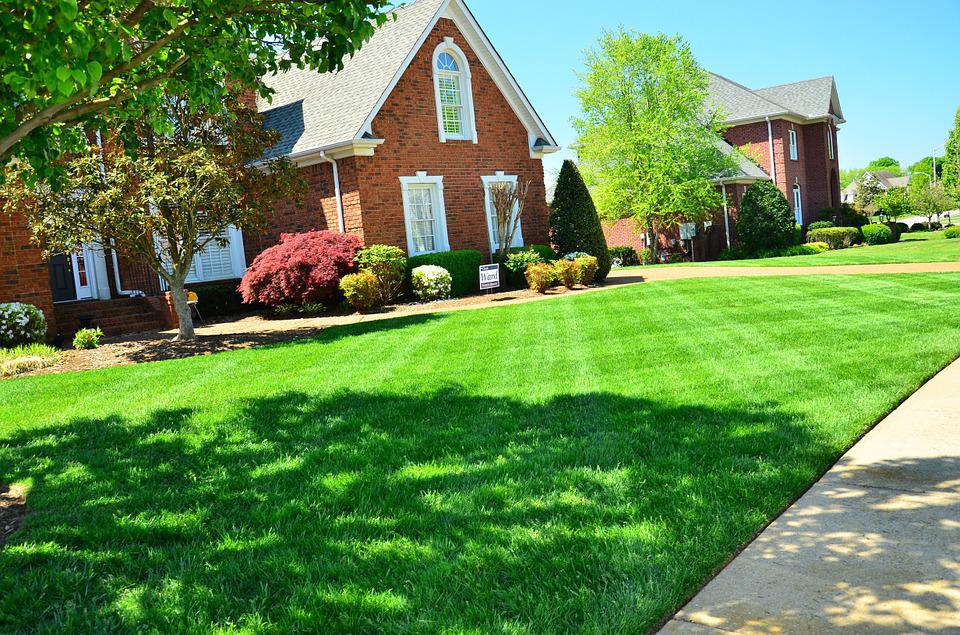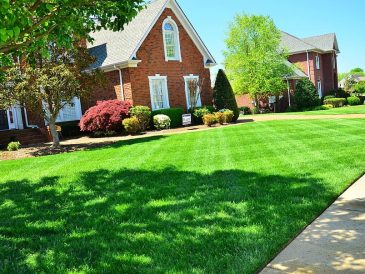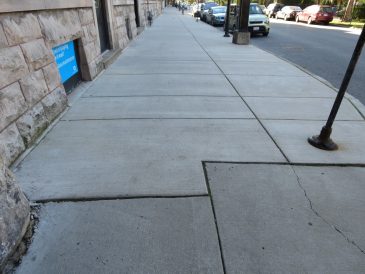Like many Canadians, you probably take pride in having an attractive lawn. A green and healthy lawn is easy to achieve with a bit of work. A little effort now will save you a lot of effort later because healthy lawns are less vulnerable to pests, weeds, drought and other problems. Follow these simple steps and you will have green, healthy grass in no time.
Mow High
Cut your grass to around 6 to 8 centimeters (2.5 to 3 inches) high. Keeping your grass on the tall side helps shade soil, prevents weed germination, encourages deeper root growth and allows for better rainfall absorption and filteration.
Water Deeply
Water your lawn deeply but not too often to promote the growth of deep roots. Apply about 2.5 centimeters (1 inch) of water only when needed. It usually is no more than once a week. Place a small pet food or tuna can on the lawn to help you measure how much water has been applied. Stop watering when the can is full. Too much water starves the soil of oxygen and invites disease.
Feed
Feed your lawn what it needs, when it needs it, whenever the grass is actively growing.
Here is how to properly feed a healthy, environmentally friendly lawn:
-
Always follow fertilizer label directions
-
Do not over apply
-
Only apply lawn food when rainfall is not expected within 24 hours of application to prevent fertilizer from washing away or leaching into groundwater.
Please note that lawn clippings and leaves return nutrients to the soil and enrich it to reduce erosion and runoff. Clippings help keep nutrients where they belong – on your lawn and out of waterways.
Aerate
Grass roots need air, water and nutrients to grow thick, deep and strong. When soil becomes compacted, even slightly, it inhibits the flow of the essential minerals that support thicker, healthier turf growth. A layer of compacted soil just ¼ to ½ inches thick can make a significant difference in the health and beauty of your lawn. Aeration creates holes down into the ground to alleviate compaction so air, water and nutrients can easily reach grass roots.
Overseed
Sow new seed over thinned areas or choose other ground covers for tough spots.
Replace
Replace grass with paving stones or mulch in heavy traffic areas.

Check
Check your lawn often to detect pests and other problems early. Make sure to identify lawn problems correctly and then decide whether action is needed.
-
Plant damage may be caused by pests and poor growing conditions, poor maintenance, road salt or dog urine.
-
A few weeds or insect pests in healthy lawns is usually not cause for concern.
-
Knowing about pests and their life cycle will help you decide if and when to take action and how to prevent further problems.
Build a Buffer
Create a natural barrier between your lawn and nearby waterways.
If you live near the water, maintain a 10-foot, uncut “no maintenance zone.” This means no moving, no feeding and no pesticides within 10 feet of the water body. Choose plants that thrive without the need for fertilization or irrigation.
Include a Mix of Plants
Be sure to include a mix of many different plants and grasses in your lawn. A diverse landscape is better for the environment and can be easier to maintain because it prevents pest problems from spreading to the whole lawn.
Protect Animals and Insects
It is essential to protect birds, beneficial insects, earthworms and other organisms that play an important role in keeping your lawn healthy.
-
Birds and predatory insects like nematodes feed on grubs and other pests.
-
Insects, earthworms, beneficial fungi and other micro-organisms break down thatch and aerate the soil.
The best way to protect these beneficial animals and insects is to use insecticides and fungicides when needed.
It is also important to note that “cosmetic” pesticide use is now restricted and even banned in some communities across Canada. So, it is crucial to do some research before buying and using any cosmetic pesticides.
Like most homeowners, having the “perfect” lawn brings a sense of pride and with some work, everyone can achieve it.
Let us know in the comment section below how you maintain your lawn.






1 Comment
[…] mowing, it is a good idea to follow the general rule of thumb of never removing more than one-third of the […]